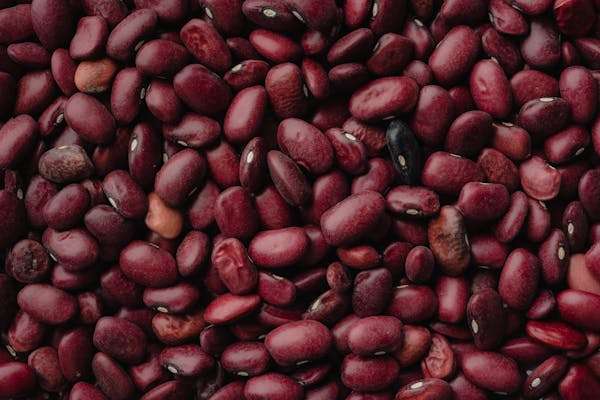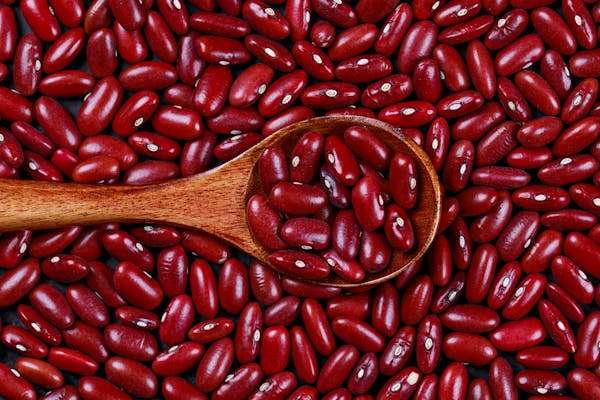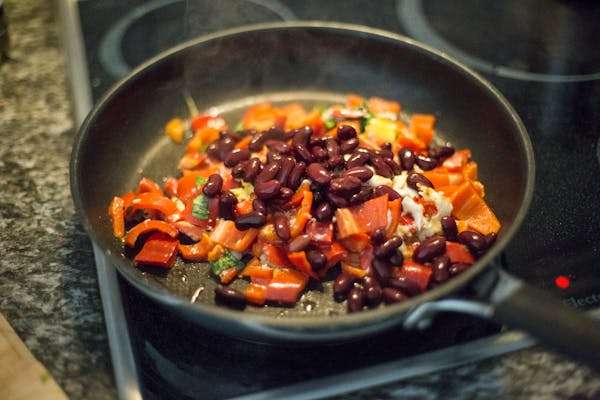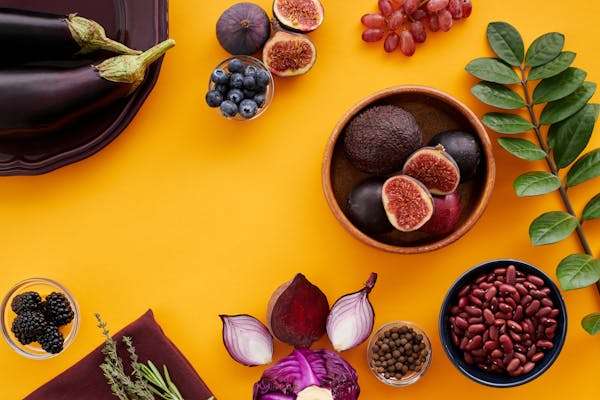Knowing the many health advantages of red kidney beans is crucial for anyone looking to improve their well-being through wholesome food choices in today’s health-conscious society. Due to red kidney beans’ benefits are well known for their exceptional nutritional value and wide range of culinary uses.

They also provide several other health benefits that warrant further investigation. We examine the many health advantages of red kidney beans in this thorough analysis, highlighting their ability to support digestive wellness, lower blood sugar, improve heart health, and much more.
Come along as we share the advantages of red kidney beans and learn why including them in your diet can be a very tasty and satisfying venture.

Nutritional value of red kidney beans:
The nutritional value of kidney beans is similar to that of other beans, but it also has its own unique features, which mainly include the following 6 points:
- High protein.100 grams of dry red kidney beans contains 22.5 grams of protein, which is higher than lean meat. Kidney beans were once called “poor man’s meat” and are also very popular among fitness crowds and those on vegetarian diets.
- Low fat. Red kidney beans do not contain cholesterol. 100 grams of red kidney beans contain only 1.06 grams of fat, and they are mainly monounsaturated fatty acids and polyunsaturated fatty acids that are beneficial to humans.
- High fiber.100 grams of red kidney beans contains 61.3 grams of carbohydrates, including 15.2 grams of dietary fiber and 2.1 grams of natural sugars.
- Rich in vitamins.100 grams of red kidney beans can meet 98.5% of a person’s daily folic acid/B9 needs, 50.67% of thiamine/B1 needs, 23.35% of B6 needs, 16.54% of riboflavin/B2 needs, and 15.6% of pantothenic acid/B5 needs. , 13.19% of the niacin/B3 requirement, 5% of the vitamin C requirement, 4.67% of the vitamin K requirement and 1.4% of the vitamin E requirement.
- Rich in minerals.100 grams of red kidney beans can meet 77.67% of a person’s daily copper needs, 48.26% of manganese needs, 37.17% of iron needs, 32.86% of magnesium needs, 32.48% of phosphorus needs, 28.94% of potassium needs, and 25.36% of zinc needs. , 6.38% of calcium requirements and 5.82% of selenium requirements.
- Rich in antioxidants. Kidney beans contain a variety of bioactive substances, such as isoflavones, anthocyanins, and lectins.
Although red kidney beans seem to contain a lot of carbohydrates, they are actually a low-glycemic index food, with a GI value of only 24. Green beans are mainly eaten as vegetables, and their nutritional value is different from dry beans.
The nutritional value of other colored kidney beans is similar to that of red kidney beans. Dark-colored kidney beans generally contain more anthocyanins. For example, red kidney beans are rich in pelargonidin.
Health value of kidney beans:
Research has found that regular consumption of kidney beans can have the following 8 positive effects on the human body.
- Regulate the flora and promote intestinal health.Kidney beans contain a large amount of resistant starch, α-galactoside (a type of soluble fiber), and insoluble fiber, which can produce prebiotic effects and promote the proliferation of beneficial intestinal bacteria. They are decomposed by intestinal microorganisms to produce short-chain fatty acids that promote health.
- Promote weight loss.

- The prevention and control of diabetes is mainly related to the rich protein, dietary fiber and slow-release carbohydrates in kidney beans.
- Anti-cancer, mainly related to the fiber and antioxidant substances of kidney beans. By regulating the flora, strengthening the intestinal barrier, and reducing oxidative stress, regular consumption of kidney beans can help reduce the risk of colorectal cancer, breast cancer, and other cancers.
- Promote heart health.
 Replacing part of the meat with beans in the daily diet can reduce oxidative stress, help reduce bad cholesterol (low-density cholesterol) levels, improve lipid metabolism, regulate blood pressure, reduce the risk of arteriosclerosis, and improve heart health.
Replacing part of the meat with beans in the daily diet can reduce oxidative stress, help reduce bad cholesterol (low-density cholesterol) levels, improve lipid metabolism, regulate blood pressure, reduce the risk of arteriosclerosis, and improve heart health. - Promoting the health of pregnant women and infants is mainly related to the rich folic acid in kidney beans.
- Promote bone health, mainly related to the rich minerals such as phosphorus, magnesium, copper, manganese, and calcium in kidney beans.
- Relieve fatigue. The rich magnesium in kidney beans helps relax nerves, blood vessels and muscles; the rich iron in kidney beans helps promote blood circulation and increase the oxygen supply to peripheral tissues; the rich manganese in kidney beans helps improve mitochondrial function and enhance cell function.
Which kind of kidney beans is healthier to eat?
Many people prefer white kidney beans because they may have a weight loss effect.
Studies have reported that white kidney beans contain alpha-amylase inhibitors (a type of lectin). This enzyme inhibitor helps inhibit the absorption of starch and achieve weight loss.
However, boiling for 10 minutes can completely inactivate the alpha-amylase in kidney beans, and the white kidney beans are not cooked at this time (it usually takes more than 40 minutes for white kidney beans to be fully cooked).
Moreover, in addition to white kidney beans, other kidney beans, and many legumes contain alpha-amylase inhibitors.
The main reason why kidney beans help with weight loss is not the amylase inhibitors in them, but the rich fiber, protein, and micronutrients in them.
Examples of how to eat kidney beans:
Kidney beans themselves have no special taste, have a mild taste, and are suitable for processing into various flavors. Many people like to use kidney beans to cook porridge or use red kidney beans to make desserts because red kidney beans benefits are more, such as kidney bean cakes and kidney bean rice, people more often combine kidney beans with spicy and/or salty flavors and use kidney beans to stew meat, stews, etc.
Three Bean Salad. It is usually a salad/cold made with red kidney beans, chickpeas, and green beans.

- Kidney Bean Porridge.
- Kidney Bean Stew. You can refer to the combination of soybeans, chickpeas, and meat.
- Kidney Bean Curry. It is healthier to make curry with kidney beans instead of part of the potatoes.
- Kidney Bean Meatballs. Vegetarian meatballs are similar to lentil meatballs.
- Kidney beans and eggs. A high-protein treat packed with fiber.
- Kidney bean puree/sauce. Similar to hummus.
- Kidney Bean and Vegetable Soup. Delicious soupy pasta.

Precautions for eating kidney beans:
Regular consumption can help adjust intestinal flora, improve the health of organs such as the intestines, pancreas, heart, and bones, promote blood circulation, and reduce the risk of diabetes, heart disease, and cancer. To fully utilize the health value of kidney beans, you need to pay attention to the following points:
- Eat cooked kidney beans. Raw kidney beans contain a lot of lectins, and a small number of people with unhealthy intestinal flora may suffer from diarrhea, vomiting, and other poisoning reactions after eating them. If you use a pressure cooker to make braised pork ribs, various kinds of mixed kidney beans are your best companions and kidney beans can bring out the meaty flavor!
- Eat kidney beans with the skin on. A considerable proportion of the antioxidants, fiber, vitamins, and minerals that determine the health value of kidney beans are located in the seed coat. Only by eating them with the skin on can the positive effects of kidney beans on the human body be exerted.
- Kidney bean snacks and kidney bean processed foods cannot be substituted for kidney beans.
- People who are intolerant or allergic to kidney beans may consider fasting from kidney beans for a period of time depending on the severity. Click to learn more.
FAQs:
FAQ 1: What nutrients do red kidney beans contain?
Red kidney beans are packed with protein, fiber, folate, iron, and potassium, making them a nutrient-dense food choice.
FAQ 2: What are the heart health benefits of red kidney beans?
Red kidney beans help lower cholesterol levels and support cardiovascular health due to their high fiber content and ability to regulate blood pressure.
FAQ 3: Can red kidney beans aid in weight management?
Yes, red kidney beans can help manage weight by promoting feelings of fullness, reducing appetite, and supporting a healthy metabolism.
FAQ 4: Are red kidney beans suitable for diabetic individuals?
Yes, red kidney beans have a low glycemic index and can help regulate blood sugar levels, making them a beneficial food choice for individuals with diabetes.
FAQ 5: How can I incorporate red kidney beans into my diet?
Red kidney beans are versatile and can be added to soups, salads, stews, and chili, or used to make bean-based burgers or dips for a nutritious and delicious meal option.

1 thought on “Red Kidney Beans Benefits: A Comprehensive Guide to Their Nutritional Advantages”